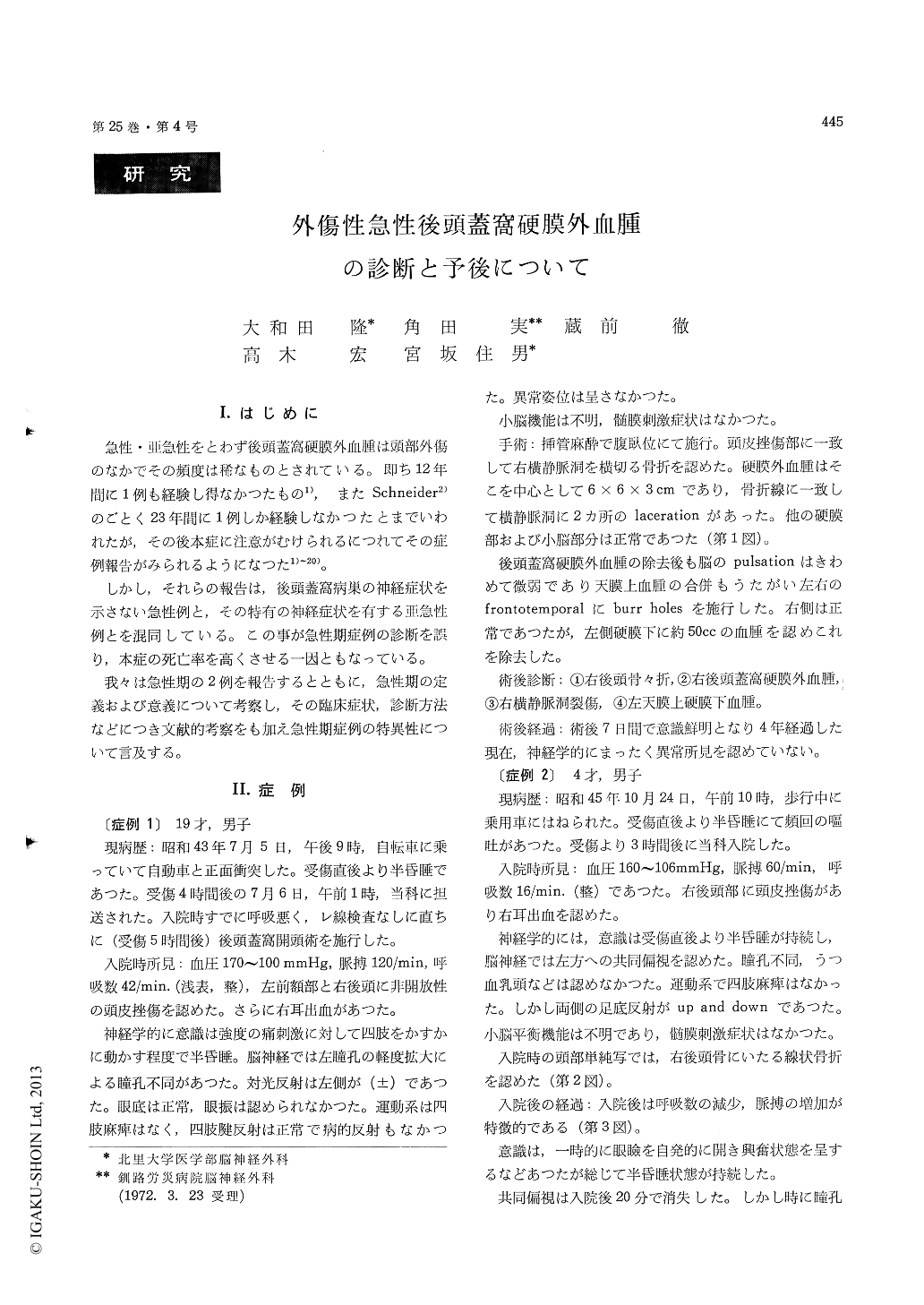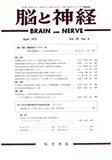Japanese
English
- 有料閲覧
- Abstract 文献概要
- 1ページ目 Look Inside
I.はじめに
急性・亜急性をとわず後頭蓋窩硬膜外血腫は頭部外傷のなかでその頻度は稀なものとされている。即ち12年間に1例も経験し得なかつたもの1),またSchneider2)のごとく23年間に1例しか経験しなかつたとまでいわれたが,その後本症に注意がむけられるにつれてその症例報告がみられるようになつた1)〜20)。
しかし,それらの報告は,後頭蓋窩病巣の神経症状を示さない急性例と,その特有の神経症状を有する亜急性例とを混同している。この事が急性期症例の診断を誤り,本症の死亡率を高くさせる一因ともなっている。
Several literatures concern to epidural hematoma of posterior fossa has been published recently. Although these previous reports has been confused the aute cases of rapid fatal course in 24 hours with the subacute ones that showed the symptoms of the space occuping lesion of posterior fossa a few days after the head injury. And also the diagnostic criteria of acute epidural hematoma of posterior fossa are still obscure. In this paper we wish to discuss about the clinical criteria, diagnos-tic problems and prognostic factors of acute epidural hematoma of posterior fossa on the basis of reports of our 2 cases and previous 15 cases.
Case 1. S. M., a 19-year-old male was admittedto our department 4 hours after the traffic accident. He was semicomatous with occipital scalp contusion and right ear bleeding. Left pupil was slightly dilatated than the right. Blood pressure was 170/ 100, puls 120, respirations was shallow and weak 48. Acute epidural hematoma of posterior fossa was greatly suspected, immediate exploratory burr holes were performed 5 hours after the accident. Vertical skull fracture just beneath the occipital scalp contusion crossing the right transverse sinus was recognized and the epidural hematoma of 6× 6×3cm was evacuated. There were lacerations of dura of transverse sinus. Subdural space and cerebellum were intact.
Bilateral fronto-temporal burr holes disclosed the left subdural hematoma of 50 cc and was evacuated subsequently. After 28 days hospitalization, he was discharged without any neurological deficit.
Case 2. M. M, a 4-year-old boy was admitted to our department 3 hours after the traffic accident. He was semicomatous with right occipital scalp contusion and ear bleeding. Eyes were deviated to the left without anisocoria. Bilateral Babinski signs were positive. Skull X-ray disclosed vertical fracture line crossing the right transverse sinus. Blood pressure was 180/110, puls 180, respirations 20. Immediate suboccipital craniectomy was per-formed 6 and half hours after the accident. Epidudal hematoma of 50cc was succesfully evacuated. However he was expired of lung edema next day. Autopsy disclosed brain swelling and mild tonsilar herniation.
We think the "acute" means that the termina-tion of lucid interval is within 24 hours accompanied with severe brain stem symptomes and signs. The main suggestive signs are tachcardia, respiratory distress, occipital contusion and ear bleeding. The fracture line of occipital bone is very important. There are no significant neurological findings. However, restressness, anisocoria, deviation of eyes and bilateral postive Babinski signs are sometimes helpful for diagnosis. The prognosis of these cases is not depend upon the duration of lucid interval but of the time from the injury to the operation. To minimize the mortality of these cases, we schuld suspect the hematoma of posterior fossa from the signs descrived above and carry out probe burr holes of posterior fossa immediately if there is any suspicion.

Copyright © 1973, Igaku-Shoin Ltd. All rights reserved.


